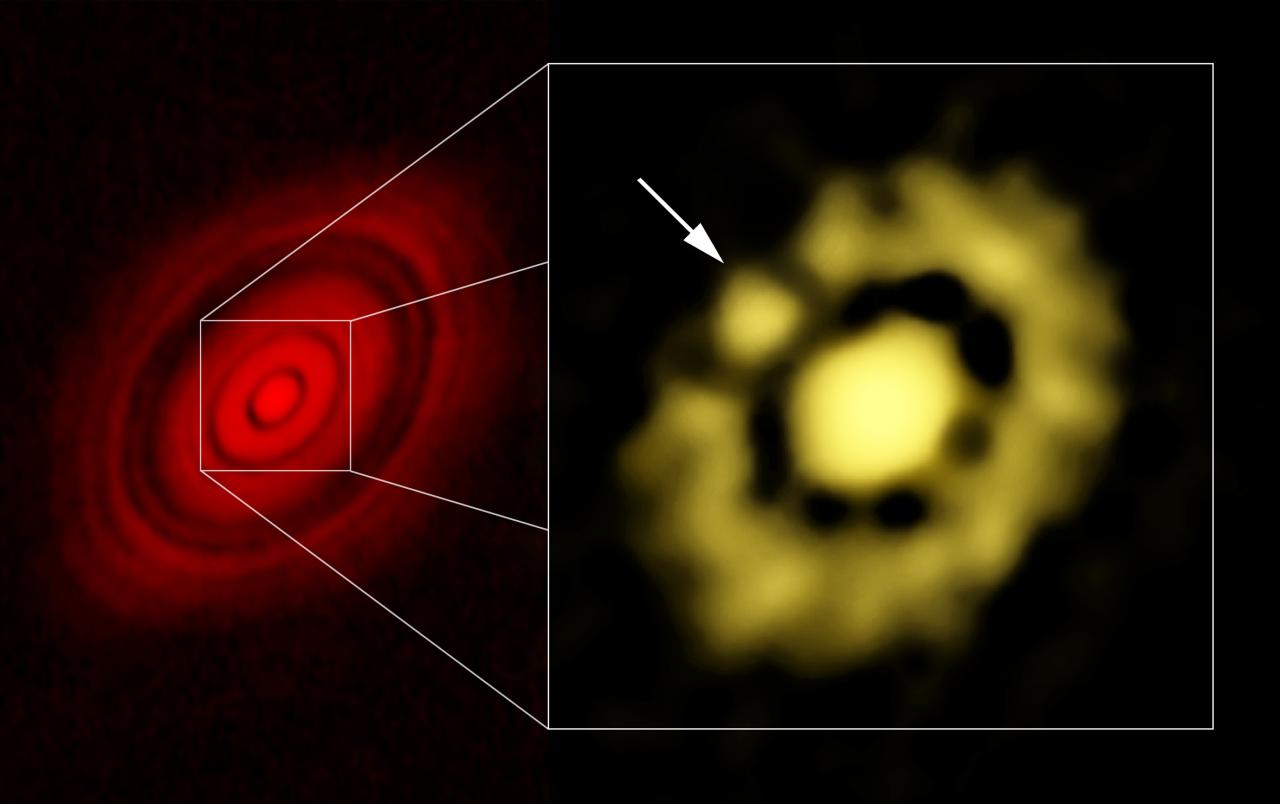Planet embryo orbiting around star HL Tau shows how planetary formation can be accelerated
Young star HL Tau is surrounded by a disk of dust displaying numerous grooves taken believed to be initial phases of planet formation
In 2014, the ALMA array of antennae produced an iconic image: it showed star HL Tau surrounded by a disk of dust, displaying numerous grooves which could possibly point to the existence of planets in the process of formation, and which would have swept up material sitting on the trajectory of their orbits. However, new and more detailed observations seem to suggest the existence of a planetary embryo, in a different location, formed through a heretofore unknown process.
Planets are formed from disks of gas and dust which orbit around young stars. Once a small accumulation of dust – known as the “grain” – has formed, it will continue to aggregate material and will produce a groove in the disk in the shape of its orbit. "The interpretation of the image of HL Tau obtained by ALMA raised many questions, because it is too young to have formed new planets and because the search for them had yielded nothing,” says Carlos Carrasco González, researcher at the Institute of Radio Astronomy and Astrophysics of the Autonomous University of Mexico (IRyA-UNAM) in charge of the project.
A new series of images obtained by the Very Large Array (VLA), richer in detail than those so far available, have revealed a characteristic never before observed on a proto-planetary disk, and hints to an explanation: one of the rings of material around the star displays a concentration of dust between three and eight times the mass of planet Earth, which could amount to a planetary embryo.
"We suggest a new scenario for HL Tau, in which the disk first fragments into different rings, producing the grooves picked up by ALMA. It is in these rings that instabilities occur which will eventually give rise to considerable aggregations of matter which will then attract even more material to themselves until a planet is formed,” says Guillem Anglada, researcher at the Institute of Astrophysics of Andalusia (IAA-CSIC) involved in the project. Thus, we would be witnessing the first phases in the formation of a planet.

THE PROBLEM OF TIME
This new scenario would also provide an answer to the problem of some classic models of planetary formation which suppose that the dust rings around young stars have a regular and homogeneous structure, where the process of planetary formation starts off at a very small scale, with the compaction of small specks of dust which progressively agglutinate into ever bigger bodies.
"The mechanism is too slow, because a star only has a limited amount of time to form planets", says José María Torrelles, researcher at the Institute of Space Sciences (ICE-CSIC) involved in the project.
HL Tau, only a million years or less old – for comparison, the Sun is about 4,500 million years old- is a young star which has not yet begun to burn the hydrogen in its nucleus, which determines a star’s entry into adulthood. When HL-Tau reaches that stage, the released energy will dissipate the ring, so that if planets have not formed by then they simply will not.
The agglomeration of dust found in the ring around HL-Tau could be proof of the existence of a faster mechanism of star formation through an initial fragmentation of the disk into rings and the formation of great lumps inside of them whose evolution would be much quicker than in the hypothesis of a homogeneous disk.
The study of HL Tau with the VLA of the National Radio Astronomy Observatory (NRAO) was carried out by an international team led by Carlos Carrasco González from IRyA-UNAM and Thomas Henning from the Max Planck Institute for Astronomy (MPIA), with the participation of astronomers from the Autonomous University of Mexico UNAM, MPIA (Germany), NRAO (USA) and CSIC (Spain). The results will be published in The Astrophysical Journal Letters.
Instituto de Astrofísica de Andalucía (IAA-CSIC)
Unidad de Divulgación y Comunicación
Silbia López de Lacalle - sll[arroba]iaa.es - 958230532
http://www.iaa.es
http://divulgacion.iaa.es

